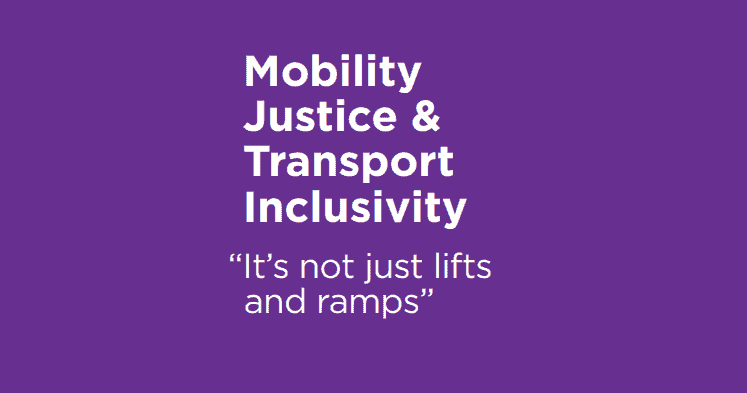Cross River Partnership has recently published its ‘Mobility Justice & Transport Inclusivity’ guidance document – a must-read if you’re looking to better understand the issue of mobility injustice and the actions that people and organisations are taking to overcome the many barriers that exist.

The publication was developed as part of the Partnership’s “Healthy Streets Everyday project, a Mayor of London Air Quality Fund initiative to empower boroughs, businesses and communities across London to deliver pedestrian priority healthy streets.”
It comprises of 10 sections, including an introduction to the project and outlining the impact of COVID-19 upon mobility justice (especially in terms of streetscape design). The guidance document then goes on to highlight different peoples’ personal experiences of mobility (in)justice, with one of the interviewees being Wheels for Wellbeing’s Director, Isabelle Clement!
Here’s an extract from the transcript of the conversation with Isabelle, in which she discusses the dangers associated with camber: “Camber is the one thing that nobody understands creates hazards. It isn’t perceived by cyclists or walkers, but if you are in a wheelchair, a threewheeler or mobility scooter, you are in danger of tipping out into the street or onto the pavement. If it’s married with a rubbish surface and gradient, it’s absolutely petrifying. It creates a lot of stress and is one of the reasons that disabled people drive everywhere, the woeful quality of pavements. Cycling is a lot less stressful for me because it involves being on the carriageway and not having to fight around all these hazards on the pavement.”
The guidance document then ends on a high note, with one of our favourite sections (of course!) being ‘Inclusive by Design’ (number 7). As well as featuring Wheels for Wellbeing’s ‘Guide to Inclusive Cycling’, this section lists and summarises a range of useful guidance documents for anyone interested in issues relating to active travel, accessibility and/or mobility injustice!
You can read the ‘Mobility Justice & Transport Inclusivity’ guidance document by clicking here.
